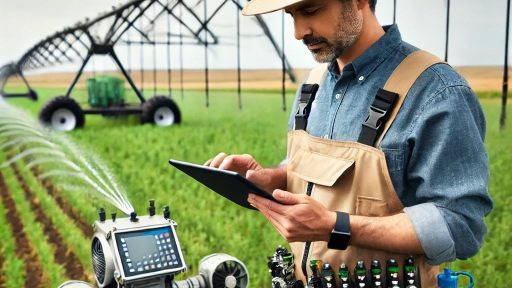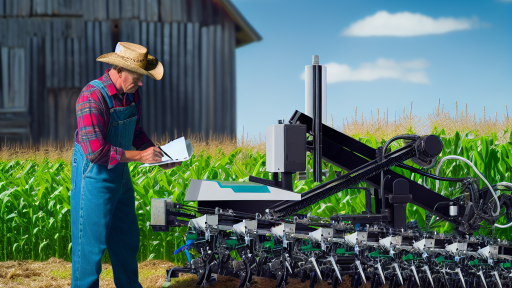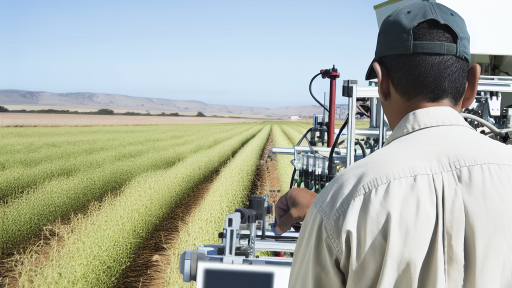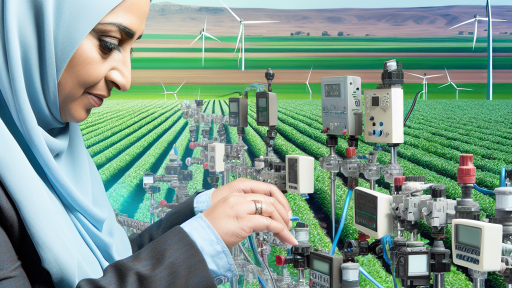Introduction to Automated Machinery in Agriculture
The Rise of Automation
Automated machinery has transformed modern agriculture.
This technology enhances efficiency and productivity on farms.
Moreover, it reduces the labor-intensive nature of farming tasks.
Farmers can now plant and harvest crops with precision and speed.
Types of Automated Machinery
Several types of machinery are now available for agricultural use.
- Robotic planters help ensure accurate seeding depths.
- Autonomous tractors reduce the need for human drivers.
- Harvesters equipped with advanced sensors optimize crop picking.
These machines utilize GPS technology to enhance operational efficiency.
Furthermore, they are often equipped with artificial intelligence capabilities.
Benefits of Automation
Automation in farming provides numerous benefits to growers.
- It increases overall crop yields by optimizing planting strategies.
- Automated machinery lowers operational costs by minimizing waste.
- It enhances workplace safety by reducing manual labor risks.
As a result, farmers can focus more on strategy than on manual tasks.
Challenges in Adoption
Despite its advantages, some challenges exist in adopting automated machinery.
The initial investment cost can be prohibitive for smaller farms.
Training workers to operate complex machinery also poses a challenge.
Furthermore, maintenance of this equipment requires special skills.
The Future of Agriculture
Looking ahead, automated machinery is poised to play a vital role.
It will likely become standard practice in many farms globally.
Transform Your Agribusiness
Unlock your farm's potential with expert advice tailored to your needs. Get actionable steps that drive real results.
Get StartedInnovations in technology will continue to improve functionality.
This approach aims to meet the demands of a growing population.
Ultimately, automated machinery will help ensure food security for future generations.
Benefits of Using Automated Machinery for Planting
Increased Efficiency
Automated machinery significantly enhances planting efficiency.
It reduces the time required for planting seeds.
This efficiency promotes faster crop cycles.
Moreover, it allows farmers to manage larger fields effectively.
Precision and Accuracy
Automation ensures precise seed placement during planting.
This accuracy improves crop yield potential.
As a result, farmers can achieve better overall harvest outcomes.
Additionally, it minimizes waste of seeds and resources.
Labor Savings
Utilizing automated machinery decreases labor costs substantially.
This reduction frees up workers for more complex tasks.
Farmers can allocate their workforce more strategically too.
Consequently, labor becomes more productive and efficient.
Consistency in Performance
Automated machinery delivers consistent performance in various conditions.
This consistency leads to uniform planting depths and spacing.
Such uniformity results in more evenly developed crops.
Ultimately, it enhances the predictability of harvests.
Reduced Soil Compaction
Advanced machinery designs help minimize soil compaction.
This feature promotes better root growth for plants.
Furthermore, it improves water retention in the soil.
Thus, healthy soil conditions contribute to robust crop growth.
Enhanced Data Collection
Automated systems enable efficient data collection during planting.
Showcase Your Farming Business
Publish your professional farming services profile on our blog for a one-time fee of $200 and reach a dedicated audience of farmers and agribusiness owners.
Publish Your ProfileFarmers can monitor soil health and moisture levels.
This information aids in making informed farming decisions.
Additionally, it strengthens overall farm management practices.
Types of Automated Equipment for Planting Crops
Seeders and Planters
Seeders and planters automate the planting process for various crops.
They ensure accurate seed placement and depth, enhancing uniformity.
These machines reduce labor costs and increase planting efficiency.
Some models can plant multiple seeds simultaneously, speeding up the process.
Also, they adjust to different soil conditions, improving performance.
Transplanters
Transplanters specialize in relocating seedlings to their final growing spots.
This equipment handles delicate seedlings carefully, minimizing damage.
They adapt to various plant types, from vegetables to ornamental plants.
Automated transplanters enhance planting precision and reduce labor needs.
Moreover, they offer speed, helping farmers optimize planting schedules.
Soil Preparation Machines
Soil preparation machines prepare the ground before planting begins.
They include plows, harrows, and cultivators that work effectively in fields.
These machines ensure soil is well-aerated and free of weeds.
Additionally, they can mix organic materials into the soil, enhancing fertility.
Overall, proper soil preparation sets the stage for successful crop growth.
Automated Irrigation Systems
Automated irrigation systems manage water delivery to crops efficiently.
These systems monitor soil moisture levels and adjust irrigation accordingly.
By conserving water, they contribute to sustainable farming practices.
Advanced systems can integrate weather data for precise irrigation timing.
Consequently, they help maintain optimal growing conditions for crops.
Harvesting Equipment
Automated harvesting equipment streamlines the collection process for crops.
They include combines and specialized harvesters tailored for specific crops.
These machines operate quickly, reducing the time between growth and harvest.
Some models even sort and package produce during the harvesting process.
This efficiency boosts productivity and minimizes post-harvest losses.
You Might Also Like: Leveraging Data to Improve Harvest Efficiency
Innovations in Harvesting Machinery
Introduction to Recent Advancements
Harvesting machinery has seen remarkable advancements in recent years.
These innovations increase efficiency and reduce labor costs for farmers.
As a result, modern farms can produce more food with fewer resources.
Smart Technology Integration
Many new harvesting machines feature smart technology capabilities.
These systems help optimize harvesting plans based on real-time data.
Farmers can monitor their machinery remotely, ensuring peak performance.
Automation and Robotics
Automation plays a crucial role in current harvesting machinery innovations.
Robotic systems now handle tasks that once required multiple workers.
This shift reduces the labor burden on farmers significantly.
Precision Agriculture
Precision agriculture technologies enhance the efficiency of harvesting operations.
These technologies utilize GPS and sensors to guide machinery operations.
Showcase Your Farming Business
Publish your professional farming services profile on our blog for a one-time fee of $200 and reach a dedicated audience of farmers and agribusiness owners.
Publish Your ProfileConsequently, farmers can achieve higher accuracy during the harvesting process.
Environmentally Friendly Practices
Many newer machines focus on environmentally sustainable practices.
These machines minimize soil compaction and reduce fuel consumption.
Thus, they contribute to more sustainable farming methods overall.
Cost-Effectiveness and Accessibility
The innovations in harvesting machinery have also become more cost-effective.
This accessibility allows smaller farms to benefit from advanced technology.
As a result, many farmers can now invest in modern harvesting solutions.
Future Trends in Harvesting Technology
Looking ahead, future trends promise even more developments in this field.
Companies are investing in artificial intelligence for better machine learning.
These advancements will continue enhancing productivity and efficiency.
Learn More: Weather Data Analytics for Smarter Farming
Comparative Analysis: Manual vs. Automated Harvesting Techniques
Overview of Manual Harvesting
Manual harvesting relies on human labor for collecting crops.
This traditional technique offers several advantages.
Workers can carefully select ripe fruits and vegetables.
Additionally, manual labor can reduce damage to the plants.
However, this method is labor-intensive and time-consuming.
Advantages of Automated Harvesting
Automated harvesting utilizes machinery for efficiency.
It significantly reduces the time required to harvest crops.
Moreover, machines can operate under various weather conditions.
Automation also minimizes labor costs in the long run.
Furthermore, it can improve the consistency and quality of harvests.
Challenges of Manual Harvesting
Despite its benefits, manual harvesting faces challenges.
Labor shortages can lead to increased operational difficulties.
Working conditions may also affect worker productivity.
Additionally, fatigue can result in lower quality outputs.
Challenges of Automated Harvesting
Automated harvesting comes with its own set of challenges.
Initial investment costs for machinery can be high.
Also, technology may require regular maintenance and updates.
Furthermore, skilled technicians are needed to operate advanced equipment.
Impact on Crop Quality
Crop quality remains a critical consideration for both techniques.
Manual harvesting often preserves produce better than machinery.
On the other hand, automated systems can uniformly harvest crops.
This uniformity can enhance processing and marketability.
Future Trends in Harvesting Technology
The future of harvesting technology looks promising.
Innovations in robotics may enhance automation capabilities.
Additionally, artificial intelligence can optimize harvesting processes.
These advancements could further bridge the gap between manual and automated methods.
See Related Content: Implementing Automated Machinery on Your Farm
Case Studies: Successful Implementation of Automated Machinery in Farms
Introduction to Case Studies
Automated machinery revolutionizes farming processes.
Case studies showcase successful implementations across diverse farms.
Showcase Your Farming Business
Publish your professional farming services profile on our blog for a one-time fee of $200 and reach a dedicated audience of farmers and agribusiness owners.
Publish Your ProfileThey highlight efficiency, cost reduction, and increased yield.
Case Study: Green Valley Farms
Green Valley Farms adopted automatic planters in 2021.
This decision positively impacted their corn production.
They achieved a 30% increase in planting speed.
Moreover, labor costs decreased significantly.
Implementation Strategy
The farm invested in high-quality machinery.
They also trained staff to operate automated equipment.
Careful planning ensured minimal disruption during planting.
Results and Benefits
Harvesting efficiency improved alongside planting speed.
The farm reported better overall crop health.
Additionally, they reduced fertilizer usage through precision planting.
Case Study: Riverbend Orchard
Riverbend Orchard integrates harvesting technology in 2022.
They implemented robotic harvesters for apples.
This innovation reduced labor hours by 40%.
Furthermore, it minimized damaged fruits during harvest.
Implementation Strategy
Management collaborated with tech firms for custom solutions.
They ensured the harvesters were suited for their terrain.
Regular maintenance schedules were established for efficiency.
Results and Benefits
The orchard saw an increase in profit margins.
They were able to expand their production capacity without additional labor costs.
Additionally, customer satisfaction improved with higher-quality products.
Implications of Automation in Farming
These case studies demonstrate tangible benefits of automation.
Farms can achieve better productivity and cost efficiency.
Automated machinery presents a promising future for agriculture.
See Related Content: Troubleshooting Common Smart Irrigation Issues
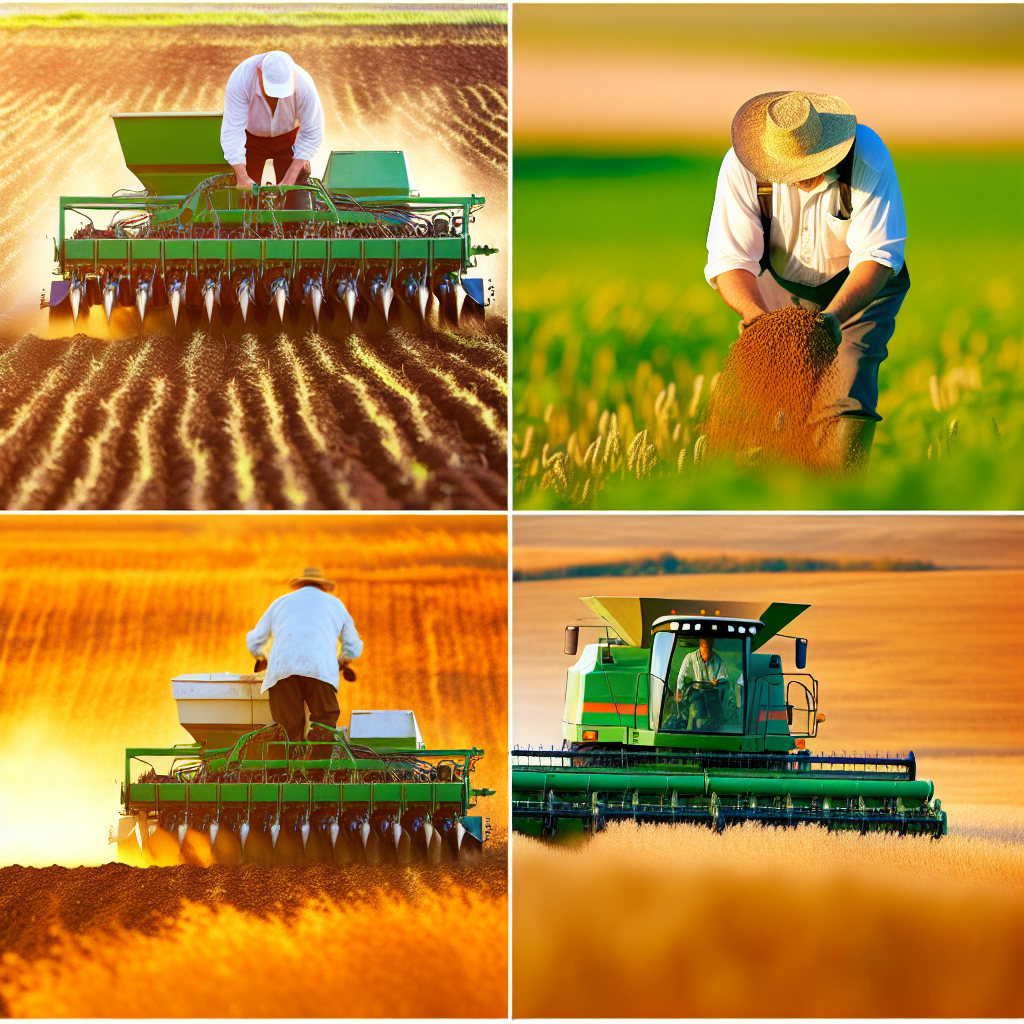
Challenges and Solutions in Adopting Automated Planting and Harvesting
Technological Barriers
Many farms face challenges with outdated equipment.
Integrating new technology can be complex and expensive.
Additionally, training employees on new systems is essential.
Cost Implications
Initial investment in automated machinery can be daunting.
Some farms struggle to secure funding for such purchases.
However, financial assistance programs can help alleviate costs.
Skill Gaps
The agricultural workforce often lacks technical skills.
Without proper training, machinery can sit unused.
Investing in training programs can bridge this gap.
Data Management
Automated machinery generates vast amounts of data.
Farmers may not know how to analyze this data effectively.
Implementing proper data management tools is crucial.
Environmental Concerns
There are worries about the environmental impact of automation.
Over-reliance on machinery can lead to soil degradation.
Employing sustainable practices can mitigate these effects.
Showcase Your Farming Business
Publish your professional farming services profile on our blog for a one-time fee of $200 and reach a dedicated audience of farmers and agribusiness owners.
Publish Your ProfileIntegration with Traditional Practices
Some farmers resist adopting automation due to tradition.
Balancing automated methods with traditional practices can be effective.
This hybrid approach can enhance productivity and sustainability.
Adoption Strategies
To overcome these challenges, a clear strategy is vital.
Exploring partnerships with technology providers can foster innovation.
Additionally, focusing on gradual implementation can ease transitions.
Success Stories
Several farms have successfully adopted automation.
For instance, Green Acres Farms implemented drones for planting.
This improved efficiency and reduced labor costs significantly.
Future Trends in Automated Agriculture
Introduction to Automation in Agriculture
Automation is transforming modern agriculture significantly.
This innovation enhances efficiency in planting and harvesting.
Farmers are increasingly adopting automated machinery for better productivity.
Advancements in Planting Technology
Precision planting is on the rise as a trend in agriculture.
Advanced seeders ensure optimal spacing and depth for crops.
These machines reduce seed waste and enhance growth potential.
Additionally, technology enables real-time monitoring of soil conditions.
Farmers can make informed decisions based on accurate data.
Improvements in Harvesting Techniques
Automated harvesters are becoming more sophisticated.
These machines utilize sensors to determine crop ripeness.
Consequently, they optimize the timing of harvest operations.
Furthermore, robotic arms enhance the precision of picking fruits.
Less damage during harvesting leads to higher quality produce.
The Role of Artificial Intelligence
Artificial intelligence is playing a crucial role in agriculture.
AI algorithms analyze vast amounts of data quickly and efficiently.
This analysis helps predict crop yields and identify potential issues.
Farmers can implement timely interventions to safeguard their crops.
Integration with IoT Technology
The Internet of Things (IoT) is revolutionizing farming practices.
Sensors connected to the internet provide real-time data insights.
Farmers can monitor field conditions from anywhere.
This connectivity creates opportunities for remote management.
Environmental Sustainability Practices
Automated machinery promotes sustainable farming practices.
Reduced chemical usage is a key advantage of automation.
Farmers can implement targeted applications reducing environmental impact.
Additionally, automation helps conserve water through efficient irrigation systems.
Challenges and Solutions
While automation presents numerous benefits, challenges remain.
High initial costs can deter small farmers from adopting technology.
Education and training are essential for effective implementation.
Partnerships with tech companies can provide necessary resources.
Furthermore, addressing labor shortages remains crucial for success.
Future Prospects
The future of automated agriculture looks promising and dynamic.
Showcase Your Farming Business
Publish your professional farming services profile on our blog for a one-time fee of $200 and reach a dedicated audience of farmers and agribusiness owners.
Publish Your ProfileInnovations will continue to evolve based on consumer demands.
Farmers will benefit from increased efficiency and productivity.
Ultimately, automation will play a vital role in food security.
The Impact of Automation on Sustainable Farming Practices
Enhancing Efficiency Through Automation
Automated machinery significantly enhances farming efficiency.
It allows farmers to plant and harvest crops faster than ever before.
Moreover, reduced manual labor results in lower operational costs.
Farmers can allocate resources more effectively due to automation.
Reducing Environmental Footprint
Automated systems minimize resource waste during farming operations.
For example, precision planting reduces seed wastage and ensures better yields.
Additionally, automated irrigation systems optimize water usage.
This approach helps conserve water, a vital and limited resource.
Promoting Sustainable Practices
Automation enables farmers to implement sustainable farming practices.
For instance, crop rotation becomes easier with automated equipment.
This technique maintains soil health and prevents pest buildup.
Furthermore, automated machinery allows for targeted pesticide application.
Farmers can apply chemicals precisely, thereby reducing overall usage.
Driving Innovation and Research
Automation encourages innovation in agricultural technologies.
Companies like GreenTech Innovations lead the way in developing new tools.
These advancements aim to create more resilient farming systems.
As a result, research in sustainable practices flourishes alongside automation.
A Path Towards a Sustainable Future
The integration of automated machinery shapes the future of sustainable farming.
Farmers can achieve greater productivity while reducing environmental impact.
Ultimately, automation can help feed a growing global population responsibly.
Additional Resources
Insights into the harvesting tools and equipment’s for horticultural …
Precision Agriculture in the Digital Era: Recent Adoption on U.S. Farms

